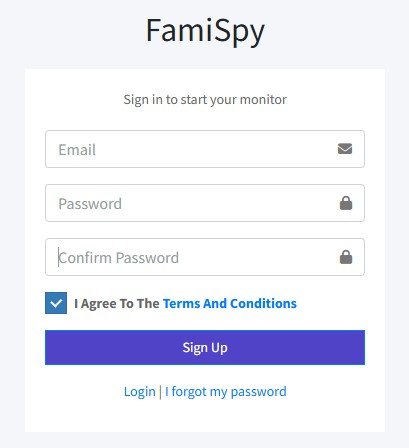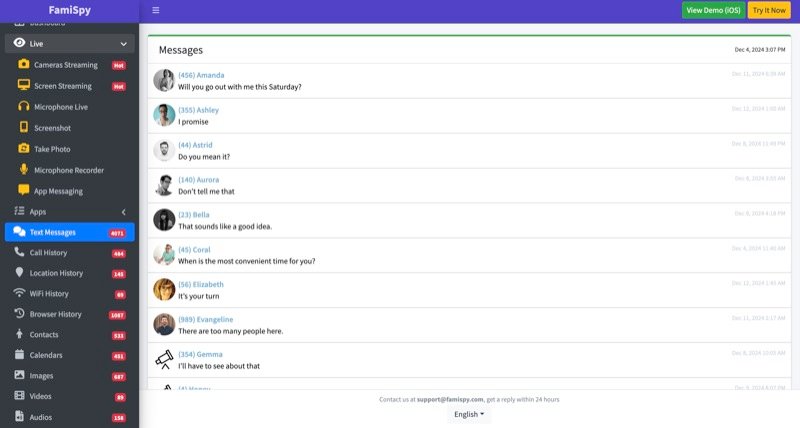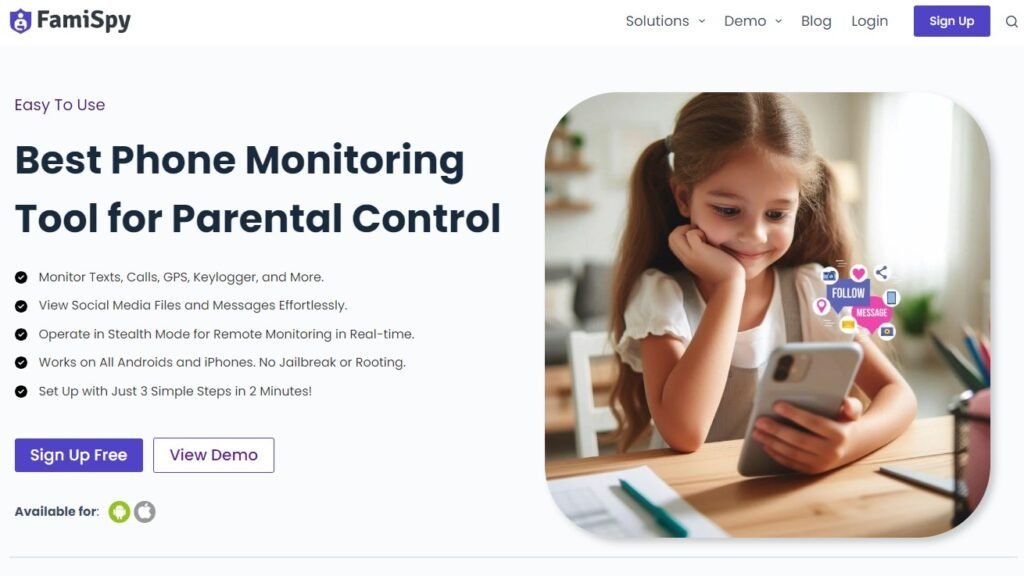If you’ve seen “YOLO” in your child’s text messages or on their social media, you’re probably wondering what it means. The YOLO meaning is, literally, an acronym for “You Only Live Once.” On the surface, it can seem positive—a call to live life to the fullest. But for parents, this popular phrase can be a major red flag.
As a mindset, “YOLO” can be used to justify everything from trying a new food to engaging in dangerous, impulsive behavior. So, how can you tell the difference? This guide will break down what “YOLO” means to teens today, how it’s used, and when you should be concerned.
Don’t Guess What “YOLO” Means for Your Child.
Get the full context on their conversations and digital activity. Protect them from impulsive risks with FamiSpy.
VIEW DEMOWhat Does “YOLO” Mean?
Let’s start with the basics. Understanding this term is the first step to understanding the mindset behind it.
The Literal Definition: “You Only Live Once”
At its core, “YOLO” is a simple phrase. It’s a modern version of the Latin “carpe diem” or “seize the day.” It’s a reminder that life is short and that we should make the most of the opportunities we have. When your child says “YOLO,” they are saying that the present moment is the only one that matters.
The Origin and History: Where Did “YOLO” Come From?
While the concept is ancient, the term “YOLO” became a massive cultural trend around 2011. It was popularized by the Canadian rapper Drake, who used it in his song “The Motto.”
From there, it exploded. It was on t-shirts, in songs, and all over social media. It became the go-to phrase for a generation of young people looking to express their desire for adventure and freedom.
Is “YOLO” Still Used by Teens Today?
You might be thinking, “That was over a decade ago. Do kids still say that?”
The answer is yes, but its use has changed. It’s no longer the “cool, new” slang it once was. Instead, “YOLO” has settled into the regular vocabulary. It’s less of a trend and more of a common expression. Teens in 2025 might use it seriously, or they might use it ironically (sarcastically). The important thing is that the mindset behind it—acting without thinking of the consequences—is still very common.
The Two Sides of “YOLO”: How Kids Use It in 2025
The most difficult part for a parent is figuring out the context. “YOLO” can be completely harmless, or it can be a sign of a serious problem. It all depends on the situation.
✅ The Positive Side: Motivation and Growth
Sometimes, “YOLO” is a force for good. It can be the little push a teen needs to step out of their comfort zone. It promotes courage over hesitation.
- “Should I try out for the school play? I’m so nervous… but YOLO!”
- “Thinking about joining the debate team. It looks hard, but YOLO.”
- “I’m going to talk to that new kid at lunch. YOLO.”
In these cases, “YOLO” is about overcoming social anxiety or the fear of failure. This is a healthy way to build confidence.
🛑 The “Dark Side”: Excuse for Risky Behavior
This is the side that worries parents. Here, “YOLO” is used as a justification for making poor, impulsive, or dangerous choices.
- “Should we skip class? YOLO.”
- “Drinking at the party tonight. YOLO.”
- “Let’s try that dangerous viral challenge. YOLO.”
The “You Only Live Once” logic gets twisted. It becomes “You only live once, so who cares about the consequences?” This can lead to serious problems.
Why “YOLO” Can Be a Red Flag for Parents
A single word might not seem like a big deal, but it can be a window into a child’s decision-making process. The “YOLO” philosophy is particularly concerning because the teen brain is still developing.
The Link Between “YOLO” and Impulsive Decisions
The prefrontal cortex, the part of the brain responsible for planning, impulse control, and understanding future consequences, isn’t fully developed until the mid-20s.
When a teen uses “YOLO” as their justification, they are actively choosing to ignore the small voice of reason they do have. It gives them a simple, catchy “permission slip” to act first and think later… or not at all.

Peer Pressure and the “YOLO” Mindset
“YOLO” is a powerful tool for peer pressure. It’s very hard for a teen to be the one who says “no” when their friends are all chanting “YOLO!”
- “Come on, just one drink. YOLO.”
- “Let’s sneak out. It’ll be fun. YOLO.”
- “If you don’t do it, you’re boring. Just YOLO it.”
It frames a responsible decision (like not drinking) as a “boring” or “cowardly” one. This can put even a good kid in a very tough spot.
From Online Slang to Offline Danger
The biggest risk is when a “YOLO” text message turns into a real-world action.
- Dangerous Social Media Challenges: Many viral “challenges” are extremely risky, from eating harmful substances to performing dangerous stunts. “YOLO” is often the reason kids try them.
- Substance Use: “YOLO” is a common excuse for trying alcohol, vaping, or drugs for the first time.
- Texting and Driving: “I just need to send this one text. YOLO.” This split-second bad decision can have permanent, devastating consequences.
- Sexting: Sending or receiving explicit photos. The “YOLO” mindset makes a teen think only about the present moment, not the digital footprint that could follow them for years.
How to Know If Your Child’s “YOLO” Is a Cry for Help
This is the central question for any parent. How do you know if your child’s “YOLO” is about joining the debate team or about drinking and driving?
The Challenge: It’s Hard to Know the Context
You can’t be with your child 24/7. You won’t be standing over their shoulder when they receive a text from a friend. If you just ask them, “Are you using ‘YOLO’ for good or for bad?” you probably won’t get a straight answer. They may feel defensive or think you’re overreacting.
So how do you get the full story? You need to understand the context.
How to Use FamiSpy to Understand the Context
This is where a parental monitoring tool like FamiSpy can be an invaluable partner. It’s not about “spying”—it’s about “verifying.” It helps you get the context you need to keep your child safe.
Instead of guessing what’s going on, FamiSpy gives you a clear window into their digital world. Here’s a simple guide on how to use it:
Step 1: Install and Set Up FamiSpy
First, create an account and install the app on your child’s device. The setup process is quick and will guide you through connecting the device to your parent dashboard. This is your private “control center” where you can see their activity.

Step 2: Check Key Conversations
From your dashboard, navigate to the “Social Apps” or “Text Messages” section. This is where you can discreetly review their conversations on platforms like WhatsApp, Facebook Messenger, Snapchat, and Instagram. You won’t just see the word “YOLO.” You will see the entire conversation around it. You can see if it was followed by “I ate too much cake” or by “Don’t tell your mom where we’re going.” This context is everything.

Step 3: Review Their Digital Habits
Is their use of “YOLO” paired with new, concerning behavior? Check the “App Usage” and “Browser History” sections. Are they suddenly spending hours on a new, unmoderated chat app? Are they visiting websites about drugs, alcohol, or dangerous stunts? This information helps you build a complete picture of the real risk.
How to Talk to Your Teen About the “YOLO” Mindset
Teaching your child responsible decision-making is the ultimate goal. Use these tips to guide the conversation:
Tip 1: Be Curious, Not Accusatory
Start with calm curiosity. Ask them about the meaning of the phrase in their social circle, not about what they did.
- Ask: “I see the word ‘YOLO’ a lot. What does that mean to you and your friends right now?”
- Goal: Open the conversation without causing them to become defensive.
Tip 2: Reframe YOLO: Protect Your One Life
Agree that they should live fully, but use the phrase to stress the importance of safety.
- The Point: Because you only live once, you must protect that life. Impulsive “YOLO” decisions can have permanent consequences.
- The Goal: Frame safety as a sign of maturity, not boredom.
Tip 3: Use FamiSpy for Context, Not Conflict
Let the insights from FamiSpy guide your teaching. Use the information to identify what conversation is needed (e.g., peer pressure, mental health, reckless behavior), not simply to start an argument.
Beyond YOLO: Staying Ahead of Teen Slang
By the time you learn what “YOLO” means, your teen might be on to a new set of slang words. The slang dictionary is always changing, and it’s impossible for any parent to memorize all of them.
Here are a few other common acronyms you might see in your child’s texts and what they mean.
| Slang/Acronym | Full Meaning | Parent’s Concern Level |
|---|---|---|
| SMH | “Shaking My Head” | Low. Usually used to express disappointment or disbelief. |
| LMK | “Let Me Know” | Low. A simple, practical term for making plans. |
| GTG | “Got To Go” | Low. A common way to sign off from a conversation. |
| IIRC | “If I Remember Correctly” | Low. Used to clarify information. |
| FOMO | “Fear Of Missing Out” | Medium. This can be a major source of anxiety and peer pressure. |
| Cap / No Cap | “Lie” / “No Lie” (or “For Real”) | Medium. Harmless on its own, but pay attention to *what* they are being so serious about. |
| KMS | “Kill Myself” | HIGH. Whether used as a joke or seriously, this term is a major red flag for mental distress and requires an immediate, compassionate conversation. |
This is why having a tool like FamiSpy is so important. It doesn’t just help you with “YOLO.” It helps you see all the new slang in its full context, allowing you to stay informed and aware.
FAQs
Conclusion
Parenting in the digital age is a balancing act. You want to give your child the freedom to grow and make their own choices, but you also have a deep-seated need to keep them safe.
The YOLO meaning captures this conflict perfectly. It’s a phrase that can be about confident, healthy choices or about reckless, life-altering ones.
You don’t have to guess which one it is. By staying informed, having open conversations, and using smart tools like FamiSpy, you can get the facts. You can guide your child to understand that “You Only Live Once” is the best reason of all to make smart, safe decisions.









